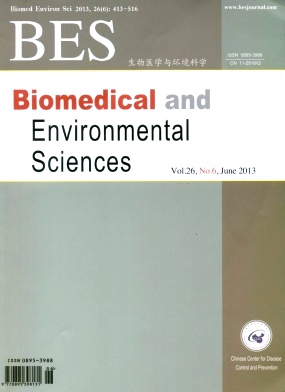Impact of Sub-chronic Aluminium-maltolate Exposure on Catabolism of Amyloid Precursor Protein in Rats
doi: 10.3967/0895-3988.2013.06.005
supported by the National Natural Science Foundation of China (30972512); the Graduate Innovation Fund of Academic Degree Committee Office of the Shanxi Provincial Government (20093014); Doctor Start-up Fund from Shanxi Medical University (B03201209); the College Students Innovation Fund of Shanxi Medical University (2010-25)
-
Key words:
- Aluminium-maltolate /
- Amyloid precursor protein /
- β-amyloid protein /
- Rat
Abstract:
Objective To investigate the impact of sub-chronic Aluminium-maltolate [Al(mal) 3 ] exposure on the catabolism of amyloid precursor protein (APP) in rats. Methods Forty adult male Sprague-Dawley (SD) rats were randomly divided into five groups: the control group, the maltolate group (7.56 mg/kg BW), and the Al(mal) 3 groups (0.27, 0.54, and 1.08 mg/kg BW, respectively). Control rats were administered with 0.9% normal saline through intraperitoneal (i.p.) injection. Maltolate and Al(mal) 3 were administered to the rats also through i.p. injections. Administration was conducted daily for two months. Rat neural behavior was examined using open field tests (OFT). And the protein expressions and their mRNAs transcription related with APP catabolism were studied using enzyme-linked immunosorbent assay (ELISA) and real-time polymerase chain reaction (RT-PCR). Results The expressions of APP, β-site APP cleaving enzyme 1 (BACE1) and presenilin-1 (PS1) proteins and their mRNAs transcription increased gradually with the increase of Al(mal) 3 doses (P<0.05). The enzyme activity of BACE1 in the 0.54 and 1.08 mg/kg Al(mal) 3 groups increased significantly (P<0.05). The expression of β-amyloid protein (Aβ) 1-40 gradually decreased while the protein expression of Aβ1-42 increased gradually with the increase of Al(mal) 3 doses (P<0.05). Conclusion Result from our study suggested that one of the possible mechanisms that Al(mal) 3 can cause neurotoxicity is that Al(mal) 3 can increase the generation of Aβ1-42 by facilitating the expressions of APP, β-, and γ-secretase.
| Citation: | LIANG Rui Feng, LI Wei Qing, WANG Hong, WANG Jun Xia, NIU Qiao. Impact of Sub-chronic Aluminium-maltolate Exposure on Catabolism of Amyloid Precursor Protein in Rats[J]. Biomedical and Environmental Sciences, 2013, 26(6): 445-452. doi: 10.3967/0895-3988.2013.06.005 |







 Quick Links
Quick Links
 DownLoad:
DownLoad: